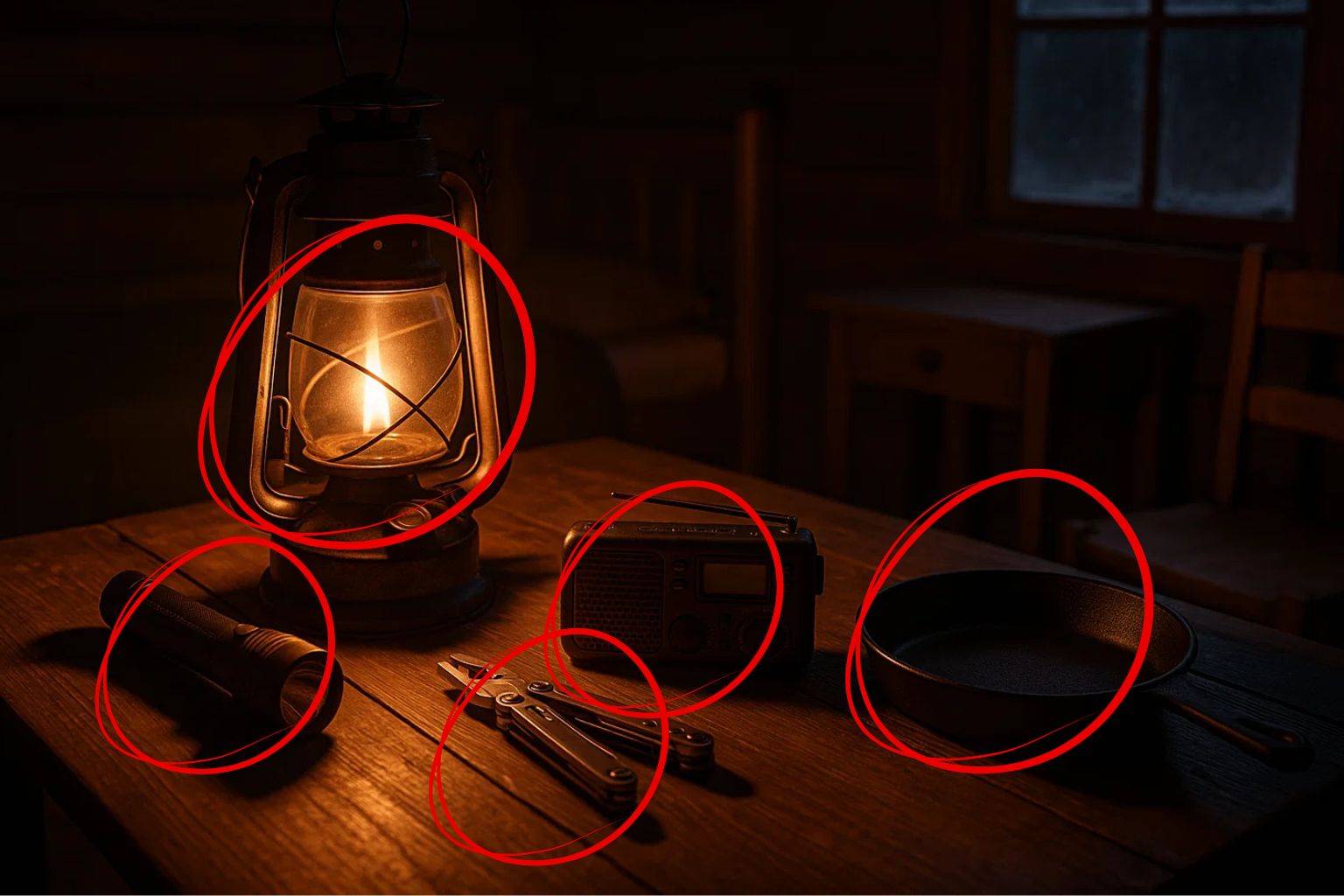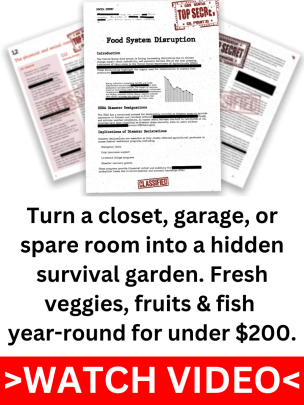The question is not whether another pandemic will occur, but when. The chaos of COVID-19 demonstrated how quickly our systems could fail. Many Americans were caught off guard by shortages and disruptions, which highlighted the importance of being prepared well in advance of a crisis.
The saying goes, “failing to prepare is preparing to fail.” If you are serious about protecting your family from the next pandemic or disaster, there is no better time to start than now. Pandemic preparation does not entail panic buying at the last minute. It’s about carefully gathering the necessary pandemic supplies and survival gear ahead of time, so you can avoid the stress and chaos of scrambling for necessities while everyone else is doing the same.
In this guide, we’ll go over the essential supplies for long-term disaster preparedness, including food storage, water storage, medical supplies, and more. With the right tools and knowledge, you’ll be ready for whatever the future holds.
Why Preparedness Matters Now More Than Ever
The lessons of 2020 remain relevant today. When the pandemic struck, people rushed to stores in panic, emptying shelves of toilet paper, hand sanitizer, and other necessities. Stores remained open, but bottled water, masks, and disinfectants were suddenly difficult to find.
Waiting until a catastrophe occurs to stockpile emergency supplies places you at a significant disadvantage. Even if businesses remain open, demand might rapidly exceed supply, leaving you vulnerable. True readiness is having everything you need before a calamity happens, rather than depending on what may still be available when the shelves are already empty.
Consider the larger consequences, in addition to the fear at the grocery store. If a crisis lasts longer than predicted, supply chains may be affected, resulting in months before specific products become accessible again. Preparing ahead of time allows you to avoid the uncertainty and stress of attempting to find basics while the pressure is on.
Building a Long-Term Emergency Kit
A well-stocked emergency kit is the foundation of pandemic preparation. It’s not just about stockpiling basic supplies, it’s about building a dependable stockpile that will last you through extended periods of disruption. Your kit should include everything from food and water storage to medical supplies and survival equipment.
Food Storage
Food is frequently the first item people worry about during a crisis. To avoid the rush, you should prepare enough emergency food to feed your family. Nonperishable products are crucial. Consider canned items, freeze-dried meals, and long-term basics such as rice, beans, and pasta.
However, rather than focusing solely on quantity, consider variety and nutrition. Your primary focus should be on high-calorie, nutrient-dense foods that do not require refrigeration or much water to prepare. While rice and beans may provide nutrition, relying solely on these staples will quickly deplete your energy. Include a range of foods, such as canned vegetables and fruits, to ensure that you have a balanced diet.
Never forget to rotate your stash! Even things with extensive shelf life can go bad at some point, so check expiration dates and replace items on a regular basis.
Water Storage
While food is crucial, water is definitely necessary. You can survive for weeks without food, but only a few days without water. During a crisis, water shortages can occur quickly, and retailers may be unable to meet demand for bottled water. That is why developing a water storage strategy now is critical.
Begin by storing at least one gallon of water per person, per day. This should address the drinking, cooking, and hygiene requirements. While bottled water is a convenient option, you can also invest in large-capacity water storage containers that are suitable for long-term use.
Consider ways to purify water in addition to preserving it. Even if your tap water is still available, contamination is always a risk. Stock up on water purification tablets and portable filters to make any water source safe to drink.
Be Your Own Doctor
During the last pandemic, hospitals were overburdened. Routine visits became almost impossible, and emergency rooms were overcrowded. Having the proper medical supplies at home allows you to avoid unnecessary doctor visits and treat minor accidents or illnesses on your own.
Begin with a thorough first-aid kit. But do not stop there. You will require over-the-counter treatments such as pain killers, cold medicine, and stomach remedies. If you or a family member rely on prescription medications, try to get a multi-month supply ahead of time.
Also, remember that hygiene products are essential during a pandemic. Soap, hand sanitizer, and disinfection wipes should be easily accessible in your home. Don’t forget face masks, whether N95 or KN95, especially if you have to leave the house or come into touch with others.
Tools for Survival
A good emergency kit is incomplete without solid survival equipment. You may regard these goods as “extras,” but when things go wrong, you’ll be grateful you have them. While food and water are essential for survival, having the correct equipment may make things lot easier.
A high-quality multi-tool is one of the most helpful tools you can have. With many capabilities ranging from sawing to cutting to repairing, it’s like carrying a toolbox in your pocket. If you don’t have access to electricity or gas, a portable burner is essential for cooking meals.
Don’t forget about the solar charger. When the power goes out, being connected by phone or laptop is critical for receiving updates, contacting loved ones, and keeping up on current events. A solar-powered charger guarantees that you’re never completely disconnected from the digital world.
Growing Your Own Food
If you’ve never considered growing your own food, now is the moment. Even a little vegetable garden can have a significant effect. Growing basic crops such as tomatoes, lettuce, and herbs does not require much area. These plants can produce fresh, nutrient-dense food to enhance your emergency supplies.
Learning how to preserve food is just as vital. Canning, dehydrating, and fermenting are wonderful techniques to ensure that fruits and vegetables are available year-round. Stock up on heirloom seeds, which will allow you to grow crops year after year, ensuring a sustainable food supply.
Water Collection and Purification
While you can store a lot of water, creating a long-term water collection plan is a wise decision. Rainwater collection systems are simple to install and can provide a sustainable source of water for your home. Invest in filtration devices or purification pills to ensure that the water you drink is safe.
With these solutions in place, you will no longer need to rely entirely on stored water. Sustainable planning can provide you with the peace of mind that comes from knowing you can weather a long-term disaster.
Evacuation Preparedness
Sometimes staying at home is not an option. If you find yourself in a scenario where evacuation is necessary, having a bug-out bag on hand can make all the difference. This is a small version of your emergency kit, designed to keep you going for at least 72 hours.
Your bug-out bag should contain necessities such as food, water, and basic medical supplies. However, consider mobility: lightweight gear such as a portable stove, sleeping bag, and water filter can keep you comfortable while on the go. Make sure each family member has their own bag, which should be packed and ready to depart at any time.
The next pandemic is not a question of if but when. The only way to protect yourself and your loved ones is to be proactive in pandemic preparation. You’ll be prepared for anything that comes your way if you establish a well-stocked pantry, prioritize sustainability, and have the necessary survival gear.
Do not wait until it’s too late. Begin today, and you’ll be prepared to tackle the next catastrophe with confidence.























